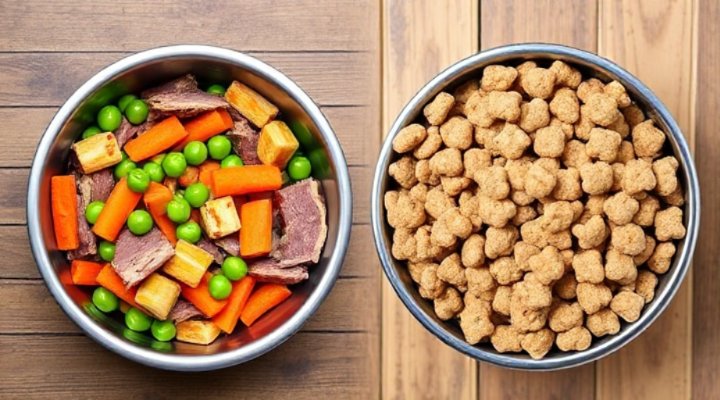When it comes to feeding our beloved pets, many of us want to provide the best nutrition possible. That’s where human-grade dog food comes into play. Unlike traditional pet food, which often contains fillers and by-products, human-grade dog food is made with ingredients that meet the same standards as food for human consumption. In other words, it’s the same quality you’d expect from your own meals.

What Makes Human-Grade Dog Food Different?
First and foremost, the ingredients in human-grade dog food are sourced from suppliers that also provide food for humans. This means higher quality control, better safety standards, and more nutritious meals for your dog. For example, while regular dog food might use ‘meat meal’ or by-products, human-grade options use real, recognizable cuts of meat and fresh vegetables.
Moreover, the production facilities for human-grade dog food are held to the same sanitary standards as those producing human food. Consequently, the risk of contamination or subpar ingredients is significantly reduced. Above all, this ensures that your dog is getting a meal that’s not only delicious but also safe and healthy.

The Health Benefits of Human-Grade Dog Food
Switching to human-grade dog food can have numerous health benefits for your pet. For instance, many pet owners report that their dogs have shinier coats, better digestion, and increased energy levels after making the switch. Additionally, because these foods are free from artificial preservatives and fillers, they can help maintain a healthy weight and reduce the risk of allergies.
Furthermore, dogs with sensitive stomachs or food allergies often thrive on human-grade diets. The simplicity and quality of the ingredients make it easier to identify and avoid potential allergens. Likewise, the high bioavailability of nutrients means your dog can absorb more of the good stuff from each meal.

Is Human-Grade Dog Food Worth the Cost?
Let’s address the elephant in the room: human-grade dog food is more expensive than traditional kibble. However, when you consider the long-term health benefits and potential savings on vet bills, the investment often pays off. For example, healthier dogs typically require fewer medical interventions, which can save you money over time.
Moreover, many pet owners find that their dogs eat less of the human-grade food because it’s more nutrient-dense. In other words, a little goes a long way. Therefore, while the upfront cost may be higher, the actual cost per meal might not be as steep as it initially appears.

How to Transition Your Dog to Human-Grade Food
If you’re convinced that human-grade dog food is the right choice for your pet, the next step is to transition them gradually. Start by mixing a small amount of the new food with their current diet, increasing the proportion over 7-10 days. This slow transition helps prevent digestive upset and allows your dog to adjust to the new flavors and textures.
Additionally, consult with your veterinarian before making any major dietary changes, especially if your dog has existing health conditions. They can provide personalized advice and recommend specific brands or formulations that suit your dog’s needs.

Final Thoughts
In conclusion, human-grade dog food offers a superior option for pet owners who prioritize quality and nutrition. While the cost may be higher, the benefits—ranging from better digestion to a shinier coat—make it a worthwhile investment for many. After all, our dogs give us unconditional love; shouldn’t we return the favor with the best food possible?
For more information on dog nutrition, check out our articles on Natural Balance Dog Food for Sensitive Stomachs and Wet Dog Food Benefits. You can also explore the FDA’s guidelines on pet food for authoritative information.
Related Keywords: premium dog food, healthy dog food, dog nutrition, pet food quality, best dog food
